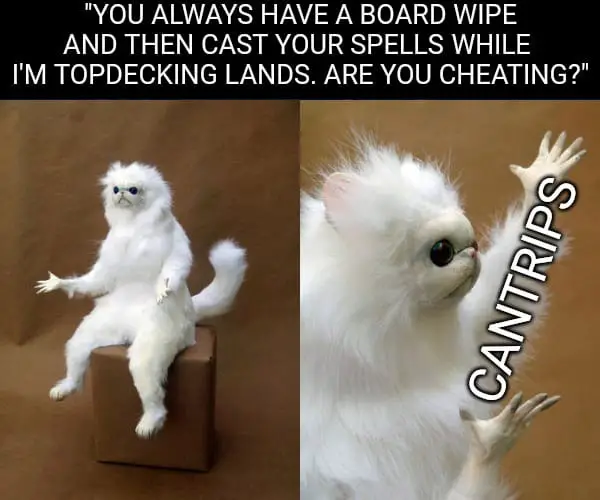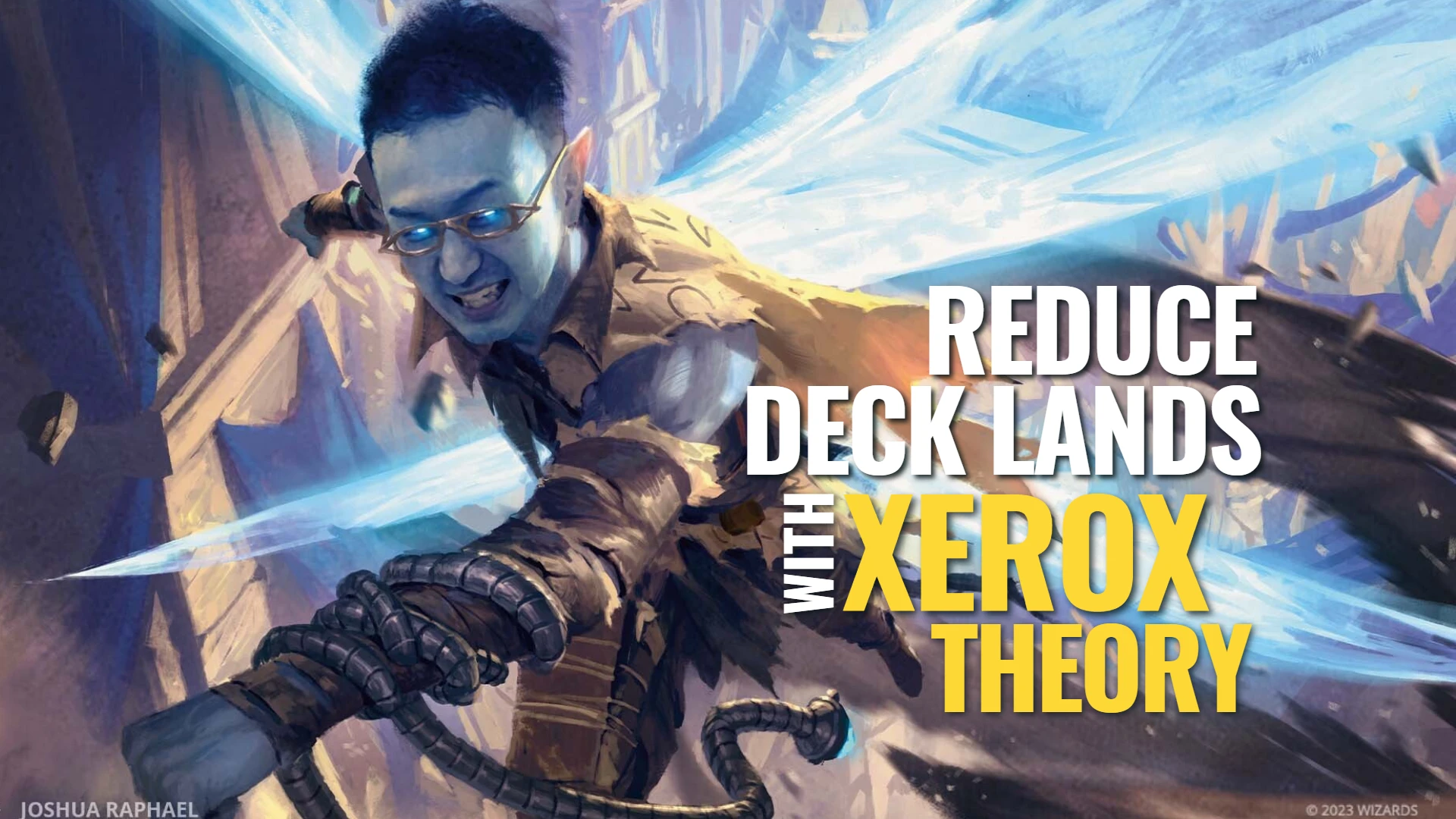Today, we’re going to break down one of the most influential (and my personal favorite) deck-building philosophies in Magic: Xerox Theory by using Cantrip cards.
Xerox Theory has been around since the late ’90s and is named after the Xerox-branded copy machines. In the context of MTG, “Xerox” is all about creating copies or ‘redundancies’ in your deck to increase efficiency and consistency. It’s about having more options to get the cards you need, when you need them. Mike Flores’ article “UB Tripping” goes deeper, but you’re already here so…
At its core, Xerox Theory is about reducing the number of Lands in your deck and replacing them with cheap Cantrips. Cantrips are low-cost spells that, when played, allow you to draw another card. This strategy allows you to ‘filter’ through your deck quickly, thus improving your chances of drawing the cards you need for your strategy to work. Generally speaking, for every 4 Cantrips, you can shave off a land from your 60-card deck.

By reducing the land count in your deck and replacing them with Cantrips, you effectively increase the density of non-land cards in your deck. This means you’re more likely to draw into your key spells, or draw a cantrip that will dig you deeper to them, giving you a better shot at executing your game plan.
Examples of Good Cantrips (Many are in Blue)
It also offers a significant amount of flexibility. The cheap Cantrips often come with some degree of card selection. Ponder and Preordain giving you some level of choice before drawing your card, Brainstorm lets you “borrow” cards from the top of your deck, and Serum Visions Scrys after drawing. While centered in blue, green has been slowly getting Cantrips too, albeit more restrictive ones.

How to Apply the Xerox Theory to MTG
When applying Xerox Theory to your deck, start by identifying the cantrips that fit available to you. Opt and Consider seem to be the power level for 1-cost Cantrips in standard, but you’ll note the pool increase as you go into older formats. As mentioned earlier, try to cut 1 Land for every 4 Cantrips in a 60-card deck, 1 every 3 for Limited formats (i.e. Draft and Sealed), and 1 land for every 6-ish cards in an Commander Deck.

Remember, the key idea behind Xerox Theory is to reduce the number of Lands in your deck. However, it’s crucial not to go overboard. Too few lands can leave you unable to play your spells, while too many Cantrips without a solid game plan can leave you spinning your wheels. Xerox pairs well with cheap interaction and spells.
While the Xerox Theory can significantly boost your deck’s consistency and speed, it’s not without its drawbacks. Since you’re reducing your Land count, you might often find yourself Mana-starved if you’re not drawing into your Cantrips. Furthermore, decks utilising the Xerox Theory can be vulnerable to strategies that disrupt card draw or specifically target cantrips.
Narset, Parter of Veils eats Xerox players for breakfast. Also, it does take a toll for each of your turns’ available Mana, and you can find yourself passing a turn without playing the spell you finally drew. It may not seem like much, but the jump from 2-Mana to 1-Mana Cantrips is bigger than you realise. Keep costs of those spells low, and you’ll be able to cast more of them more quickly.
End Step
In conclusion, Xerox Theory is a powerful deck-building strategy that can provide a level of consistency and flexibility to your decks. Do you like cantrips too?




